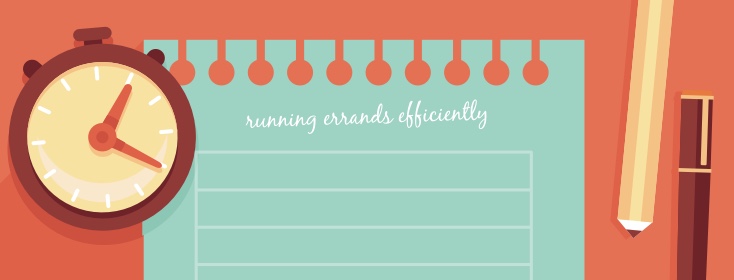Running Errands Efficiently with a Path of Least Resistance
You all know the moment when you pull into a busy store parking lot and say to yourself “Is this the apocalypse? Why is everyone grocery shopping now?” Whether you have dealt with your RA for years or are newly diagnosed, I am sure you can recall a similar moment as well as your subsequent thoughts –“How will I survive the sea of shopping carts and endless lines? Will I have the energy and strength to put everything away when I get home?” Here are some practical shortcuts to running errands that may help you conserve energy for the other important moments of your day.
Timing.
Peak shopping times add unnecessary resistance to your shopping experience. Isn’t it easier to navigate empty or semi empty aisles, than those jam-packed with everyone trying to buy the same thing at the same time? Your body (especially your wrists and hands) will thank you for shopping during off peak times. Think weekdays rather than weekends. If weekends are a must, think early morning or late night, rather than afternoon. Also, think pre-storm preparations far in advance!
Conserve your energy by doing the most laborious errands first. If you finish the errands that take the most energy, the last few stops on your list will be easier to accomplish. Try to plan your errands via making lists and prioritizing. That way you are focusing on the most important errands. Wind a path through your long list, while trying to create a path of least environmental resistance for your body’s benefit!
Tactic.
When shopping, remember to protect your joints! Get the right size cart appropriate for your shopping. Good body mechanics go a long way. Face your body toward the shelves you’re retrieving items from. Then once you make your selection, move your feet to turn (not twist) while placing items in the cart. It is especially with large and heavy items along with remember to hold these items close to your body to reduce the load on your arms, shoulders and back.
When life gets busy or your body is not cooperating with you, remember you can get pretty much anything online. Why not take advantage? The only wear and tear you will endure is searching via computer mouse pad/touch screen or typing in your credit card! It will be delivered, which means minimal lifting. The best part is most of the time, pricing is comparable. Do not forget, grocery stores deliver as well!
Teamwork.
If you are lucky enough to have helpers (i.e. spouse, older children, family, or close friends), utilize them! Enlist their help when you need it, especially if they offer their assistance. Often times, help is all around us but our pride and self-reliance prevents us from asking for help when we truly need it.
Grocery stores are a place where there are usually people to help you bag and bring your groceries to your car. When grocery shopping, you have the potential to lift the items you buy seven times. Yes, seven times. You can potentially eliminate three lifts by utilizing a grocery helper to simply bag and bring the groceries to your car. I would say that is energy conservation at its finest! I have to admit, the heaviest baggage when I ask for help is not my actual groceries, it is my self-judgment that I bring along. Once I am able to stop judging the state of my physical abilities, I am able to ask for help much easier. I figure even if the person (often time teenager) helping me wonders why I need help with my groceries when I look able bodied, what more do I have to say than “thank you?”
Our bodies change daily and sometimes we feel more energized than others. Some days can be brutal due to inflammation while other days are just fine. My advice is meet yourself where you are. Take an inventory and then plan your day accordingly. You will feel much better just acknowledging yourself and your physical abilities at the time. You will also feel more empowered making your path of least resistance as you run your necessary errands!
All of the information provided in this blog are my real life shortcuts and based upon two principles used in occupational therapy practice called energy conservation and joint protection.

Join the conversation